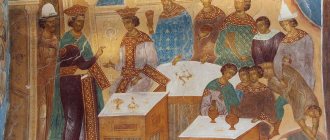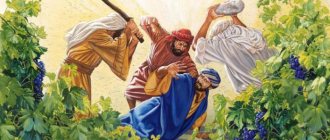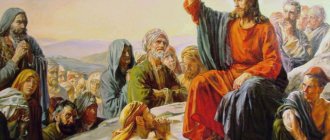The Christian New Testament includes four rather lengthy texts called the gospels. All of them are original biographies of Jesus Christ. But at the same time, being sacred texts, they are also theological treatises that reveal the personality and mission of Jesus from a theological perspective. This property of them leads to the need to compile versatile commentaries, which have been written by exegetes with varying success for almost two thousand years. Below we will go through the content and also provide a brief interpretation of the Gospel of Luke.
Prologue of the Gospel of Luke
The prologue of this work consists of one long sentence in which the author presents to the addressee, named Theophilus, the purpose of his writing. It consists in strengthening him in Christian instruction - a creed that he, apparently, had recently accepted. At the same time, Luke notes that works of this kind have already been compiled and continue to be compiled by many other Christians. He argues for the value of his work by the fact that he first carefully collected all the information relating to the essence of the matter, and arranged it in a logical, chronologically reliable, in his opinion, order.
Childhood of Christ
Convincing the reader to accept the messianic role of Jesus is the main purpose with which the gospel of Luke was written. Chapter 1 is preparatory in this regard, as are the several that follow it. It must be said that from the text of the monument a historiographical tendency is clearly visible to divide history into three periods: the time of the Old Testament revelation (Israel), the time of Christ (which is narrated in this gospel) and the time of the Church after Christ (this time will be discussed in the book of Acts, written by the same author). So, the first few chapters are designed to build a bridge from the Old Testament to the time of the coming of the Messiah to the world. The interpretation of Luke's gospel at this point is based on the interpretation of the role of Old Testament figures descended from priestly dynasties. Through instructions and revelations received from above and through their response actions, they prepare the world for the coming of the one whom, according to the thoughts of the author of the gospel, the Jewish prophets announced in ancient times. To do this, the text quotes the Old Testament several times, accompanied by an unequivocal interpretation that the birth of Jesus was predicted a long time ago and he is the divine messenger and Deliverer. These events include the two annunciations to Mary and Elizabeth (who both conceive Jesus Christ and John the Baptist, respectively), their meeting, the stories of the birth of their two babies, the bringing of Jesus to the Jerusalem temple for circumcision, and the episode in which Jesus appears as a twelve-year-old boy The last event is worth dwelling on in more detail.
Author.
The two books of Luke (the Gospel of Luke and the Book of Acts) make up 28 percent of the entire Greek New Testament. However, Luke himself is not mentioned by name in any of them. The only place where his name is mentioned is in Col. 4:14; 2 Tim. 4:11 and Philim. 24. Moreover, Luke is implied in those sections of the book of Acts where his narrative is in the first person plural. numbers (Acts 16:10-17; 20:5 - 21:18; 27:1 - 28:16).
Luke, in all likelihood, was not a Jew, judging by the way the Apostle Paul lists those who greeted them in his letter to the Colossians (Col. 4:10-14). Paul begins with Aristarchus, Mark and Jesus (Justus), stipulating that the last two were Jews (“circumcised”); Those who followed (Epaphras, Luke and Demas) were therefore pagans.
Paul calls Luke a doctor (Col. 4:14), and many have tried to confirm this by citing passages in Luke and the book of Acts.
According to tradition, Luke was from Antioch, but it is not possible to prove this based on facts.
Judging by Luke. 1:3, the evangelist acted as a historical researcher. Guided by his special goals, he carefully studied the material at his disposal. He talked with eyewitnesses of the events (1:2). And, apparently, he discovered a number of details related to the childhood and youth of Jesus Christ; perhaps he learned them from His mother Mary (2:51). It appears that Luke also had contacts at the court of King Herod (3:1,19; 8:3; 9:7-9; 13:31; 23:7-12).
There is no consensus among theologians about what sources Luke used when writing his Gospel. It appears that he reworked a number of materials available to him in order to create a single work in his own style and reflecting his intended purpose. All this, of course, was accomplished under the influence of the Holy Spirit.
12-year-old Jesus and the Jewish sages
Jesus, according to the Gospel of Luke, was distinguished by extraordinary wisdom and knowledge from his very childhood. This episode, for example, tells how the family of Christ went from their native Nazareth to Jerusalem for the holiday. When the celebration came to an end, all the relatives set off on their way back, but Jesus' parents - Mary and Joseph - did not miss the boy, thinking that he was with other relatives. However, when three days passed, it became clear that Jesus had been forgotten in the capital. Returning for him, his parents found him in the Temple, where he communicated with teachers of the law and sages, delighting and amazing them with his not only adult, but even inhuman wisdom. At the same time, Jesus called God his father, which was by no means typical for Judaism of that time.
Place and time of writing.
If we assume that the book of the Acts of the Apostles was written before the beginning of the persecution of Christians unleashed by Nero in 64 A.D. (which, apparently, is evidenced by the fact that it ends with the stay of the Apostle Paul, still alive , imprisoned in Rome), then the Gospel of Luke should have been written several years earlier, since the book of Acts seems to follow from it. And therefore, in the absence of accurate data on this matter, we can assume that the Gospel was written between 58 and 60 years.
Luke has no indication of where his Gospel was written. So any assumptions on this matter come down to guesswork. According to some, it was written in Caesarea or Rome.
Preparing Jesus for Ministry
The Gospel of Luke sets out in some detail how Christ prepared for his entrance into public ministry. This is preceded by a story about the preaching of John the Baptist, who, according to the first chapters of the monument, was his relative. By this time, the matured John had become a hermit, preaching in the desert and practicing the ritual of solemn repentance of sins through washing in the waters of the Jordan River. Christ also went through this ritual. According to the gospel account, when Jesus emerged from the water, the Holy Spirit descended on him like a bird, and from heaven a divine voice proclaimed Jesus to be the son of God. The baptism scene is then followed by the genealogy of Christ. The Gospels of Matthew and Luke are the only two texts that have preserved for us the genealogy of the Savior. However, they differ significantly. The strong theological bias evident in these family lists makes them more theological commentaries on the life of Christ than his reliable genealogical data. Unlike Matthew, whose family tree of Jesus goes back to Abraham, Luke goes even further and reaches all the way to Adam, after which he indicates that Jesus is the Son of God.
The place of genealogy in the composition of the gospel was not chosen by chance by the author. Implicitly, the image of Jesus as the new Moses is emphasized here (and the fulfillment of the latter’s prophecy about the new prophet), the narrative of which was also, after prehistory, interrupted by genealogy (Book of Exodus, chapter 6). After the genealogy there follows a story about the temptations of Christ that he experienced in the desert from the devil. The point of this story is to weed out false tendencies in the readers' understanding of the messiahship of Jesus.
Purpose of writing.
Luke had two purposes in writing this book. The first was to strengthen the faith of one Theophilus by showing him that his faith in Christ rested on historical fact (1:3-4). Luke's second purpose was to present Jesus Christ as the Son of Man who was rejected by Israel. And to show that thanks to this rejection, Jesus was preached to the pagans, so that they too could learn about the Kingdom of God and receive salvation.
The book is aimed at pagans. This is evidenced by several points. First. Luke often accompanies the mention of geographical points in Judea with explanations of their location (4:31; 8:26; 21:37; 23:51; 24:13). If he were addressing Jewish readers, there would be no need for this.
Second. He traces the genealogy of Jesus (3:23-28) to Adam, and not to Abraham, as Matthew did, apparently to show that Christ belongs to all humanity, and not just to the Jewish people. Third. Speaking about the time of the birth of Christ (2:1) and the beginning of the preaching ministry of John the Baptist (3:1), Luke refers in this regard to the Roman emperors and rulers of those days. Fourth. The evangelist resorts to a whole series of words that were more familiar to pagan readers than the corresponding Jewish terminology (we will not find this, for example, in the Gospel of Matthew). Thus, he calls “teacher” not the Jewish “rabbi”, but the Greek didaskalos.
Fifth. When quoting from the Old Testament, Luke uses the Septuagint. At the same time, he does not have many direct quotes, although his book is full of hints and references. Quotes and references are found in 2:23-24; 3:4-6; 4:4,8,10-12,18-19; 7:27; 10:27; 18:20; 19:46; 20:17,28,37,42-43; 22:37. All of them, with the exception of 7:27, are taken from the Septuagint. As for 7:27, these words are not from it and not from the Hebrew Masoretic text, but from some other (unexplained) one. Sixth.
Luke has relatively little to say about the fulfillment of prophecies in Jesus, since this topic was not as important to the Gentiles as it was to the Jews. Luke refers to the fulfillment of Old Testament prophecies only five times, and all the corresponding quotations, except one (3:4), were put into the mouth of Christ, who spoke to the Israelites.
Sermon in Galilee
The ministry of Christ in Galilee is the next important period in the life of Jesus, which is narrated in the gospel of Luke. Chapter 4 opens this section with the story of the rejection of Christ's messianic claims by his fellow countrymen, the inhabitants of Nazareth. After this incident, the Savior goes to Capernaum and preaches there, as well as in the vicinity of Lake Tiberias. Several significant events take place here. The Gospel of Luke begins the story of this period with the miracle of casting out demons. This episode generally opens a series of miracles attributed by the gospel tradition to Jesus Christ. In this monument there are only twenty-one of them. Those that were committed at Capernaum are summed up by the statement that the whole people followed him. Among this people were the first disciples of the Savior, who later became apostles. This is one of the differences between this gospel and others in terms of the chronology of events. According to the text of the gospels of Mark and Matthew, the calling of the apostles preceded the Capernaum miracles.
Such a bright statement about oneself in Galilee caused a reaction from radical religious groups of Jews. Christ became the object of attacks and entered into forced disputes with representatives of the Pharisaic party. There were five of them in total, and they concerned various aspects of the Mosaic Law. Jesus emerges victorious in each of them, leading to a conspiracy against him. Luke then describes the episode in which Jesus chooses twelve chief disciples - his inner circle. And then the author describes the event known as the Sermon on the Mount. The Gospel of Luke, however, describes it somewhat differently than it is presented in the text of Matthew. One of the differences is that the place of preaching is moved from the top of the mountain to its foot. Plus, its material was quite seriously reworked and rearranged.
The next block within the framework of the Galilean sermon tells about the miracles performed by Christ and the parables he told to the people. Their general meaning boils down to explaining to the reader who he is and confirming the messianic and divine dignity of Christ. The parables of Luke's gospel in this respect represent material borrowed from earlier sources. At the same time, the author creatively reworked it to a large extent in order to adapt it to the purpose of his narrative.
Transition to Jerusalem
About ten chapters are devoted to Jesus' journey to Jerusalem and his ministry within its borders. This is a fundamentally new section in the text, and it is preceded by its own introduction. Jesus, according to the Gospel of Luke, realizes that he is coming not just to preach and perform miracles, but in order to accept death for the sake of atonement for the sins of the whole world. This one of the basic Christian doctrines is very clearly reflected in the nature of the actions and words of the image of Jesus that is characteristic of this gospel.
Particularly worth noting here is a pamphlet that tells how, on the way to Jerusalem, Christ was met with hostility in a Samaritan settlement. This creates a striking contrast with the narrative of the Gospel of John, where, on the contrary, Jesus is greeted very cordially in Samaria and is even recognized as the messiah en masse. This story is also not without theological and ethical content. In response to the Samaritans’ rejection of Christ, two of his closest apostles - John and James - propose nothing more or less than to bring down fire from heaven in the image of the prophet Elijah and incinerate the city. Christ responds to this initiative with a categorical refusal, reproaching his disciples for ignorance of the spirit to which they belong. This plot is followed by three dialogues between Christ and various people who express a desire to follow him. In them, or more precisely, in Jesus’ responses to these wishes, the full absoluteness and height of the requirements for the Savior’s disciples are revealed. The role of these dialogues in the gospel is to demonstrate the ethical perfection of Christian teaching. This comparison is offered from two perspectives - the pagan worldview and the Jewish religious law, which are presented as inferior to what Jesus offers and preaches.
Gospel of St. Luke further tells about the missionary campaign of the apostles, numbering seventy-two people. Before this, there was already a similar mission of twelve apostles, briefly mentioned by the author earlier. It is likely that the two missions are an artistic invention of Luke himself, based on different interpretations of the same material. However, there is a theological meaning to this. It consists in preparing the reader for the further narration of the book of Acts, in which the dominant role of the coalition of the twelve apostles comes to naught, and other personalities begin to exert the main influence, among whom the Apostle Paul, who never saw Christ during his life, becomes the absolute authority and magnitude. In addition, the number twelve in the Old Testament is associated with the twelve tribes of Israel, that is, with the completeness of the Jewish people. Therefore, the twelve apostles of the Gospel of Luke also relate specifically to the Jewish world. But one of the fundamental tasks of this text is to convince the reader of the universality of Christ’s mission, that his ministry is addressed to all peoples of humanity. The fullness of pagan humanity, all the nations of the earth in the same Old Testament are associated with the number seventy-two. That is why the author needed to create another mission of seventy-two apostles.
The return of the disciples from the missionary campaign ends with the solemn transfer by Christ of special mystical power to cast out demons and perform miracles. This is interpreted as the fall of Satan's kingdom under the onslaught of divine power.
What follows is a very important place in the gospel in terms of the ethical content of the gospel of Jesus, which tells about a learned scribe, a Jewish sage who came to Christ to tempt him. He does this by asking about the most important commandment. However, Jesus’ answer that the whole law and the prophets consist in the single commandment of love for God and neighbors delights the scribe. Following this, he clarifies who is considered a neighbor. Here, as is in the spirit of the Gospel of Luke, Christ tells the parable of the Good Samaritan, which illustrates that by neighbors we mean all people without exception.
Chapter twenty one
There was a sacred treasure allocated by the lovers of God, which was used for crafts and repairs in the temple, and in general for decorating the temple and for feeding the poor. But recently, the priests have turned this treasure into trade, dividing it among themselves, and not using it for what it was originally intended for.
The Lord praises the widow more than all others, because she lost all her wealth through her poverty. For two mites, apparently, are insignificant, but for the one who fed on alms they made up the entire belly: for the widow was a beggar. So, the Lord gives the reward, paying attention not to how much is given, but to how much remains. In the houses of the rich, who brought little and little, there was much more left, but her house was completely empty, and there was nothing left in it. Therefore, truly she is worthy of praise greater than those.
Some thought that by “widow” one could mean every soul who has renounced her former husband, that is, the Old Law, but has not yet been worthy to unite with God the Word, and that instead of a deposit she brings the subtle and possible faith and good conscience. For with faith one must also bring a good conscience, that is, a blameless life. And whoever comes to God with them seems to believe more than all those who are rich in teaching and abound in pagan virtues.
The Lord, as having had to endure the Crucifixion for a short time, now prophesies appropriately about Jerusalem, so that in this we have strong proof that He is the true God. Therefore, even when some praised the temple buildings and “investments” (I think they were talking about carved and sculptured works, for example, about palm trees and cherubim (1 Kings 6:32): this may have been what they called), the Lord did not which he does not pay attention to, but predicts their destruction.
They thought that He was talking about the end of the universe, although He was talking about the captivity of Jerusalem by the Romans. Therefore, condescending to them, He leaves for a while the conversation about the captivity of Jerusalem by the Romans, intending to add it to the next one, and now He talks about the end of the world and warns them not to listen to the false prophets who are going to come before His coming.
There will be “wars and turmoil,” for when all love ceases, wars and turmoil will naturally take place. As a result of wars, “famine and pestilence” will come; pestilence - from the deterioration of the air from corpses, and famine - from the lack of cultivation of the fields.
Since they were simple and unlearned people, so that they would not be embarrassed by the fact that wise men would demand an account from them, he says that they should not worry about this at all. For from Me you will receive wisdom and wisdom together, so that all those who oppose, even if united in one, will not be able to resist you either in wisdom, that is, in the power of thoughts, or in eloquence and infallibility of language. Often someone is skilled in drawing up conclusions and resourceful in thoughts, but when there is noise, he soon becomes embarrassed, and therefore, when speaking to the people, he mixes everything up. But they, that is, the apostles, were given grace in both respects. Therefore, the priests were amazed at the extraordinary wisdom of Peter and John, knowing that before they were simple people (Acts 4:13). And Festus said to Pavel: You have gone crazy, Pavel! “great learning drives you to madness” (Acts 26:24).
Sermon in Jerusalem
Service in the capital of Judea and the religious center of the Jewish world is a very short period of the life of Christ, but, nevertheless, extremely important. Jesus spends his nights in the nearby villages of Bethany and Bethagia. During the day, his activities are concentrated in the vicinity of the Jerusalem Temple. As in the other gospels, the first entry into Jerusalem is tinged with solemnity and is noticeably ritualized. It is described in such tones in order to present this event as the fulfillment of some Old Testament prophecies that the Messiah would enter the holy city as a king, sitting on a donkey. Then follows the story of the cleansing of the Temple from traders. The same story is found in other texts, for example, in Mark. However, here Luke again changes the chronology of events, placing the cleansing on the day of the entry into Jerusalem, and not on the day after. After this, Christ begins to teach the people daily. And people listen to him en masse and recognize him as at least a prophet, as the Gospel of Luke reports. Christ’s sermons boil down mainly to the fact that the Jewish religious authorities of his time usurped the powers of the priesthood, but by their actions they did not serve God. The second important motif in his teachings is his own messianic role. Jesus does not speak about it directly, but with his questions he provokes the people listening to him to accept this fact. The Pharisees and the elite of Jewish society, being exposed, plot to kill Jesus. However, they are prevented from doing this by the enormous popularity of Jesus among the people, so they develop a cunning plan.
A very important block that follows tells about Christ’s preaching about the end of the world. Its outline also includes predictions about the end of the Kingdom of Judah and the destruction of the Temple.
Interpretation of the Gospel of Luke by chapter: Summary of the Gospel of LukeGospel of Luke - Chapter 1
The purpose of the author's writing of the Gospel. The story of the birth of John the Baptist. Meeting of the Virgin Mary with the Angel Gabriel
Terms and concepts Temple of Galilee Nazareth King David High Priest
Commentary Luke 1, 1 compose narratives - The Gospels were “compiled” and not written anew.
During the first decades of the Church's existence, various recollections of Jesus' activities were recorded in fragments by individuals. They were read in one Church, then passed on to another, and thus circulated throughout the existing Churches. Presumably only in the 60s A.D. They began to gather into a single whole, which they began to call the Greek word “Gospel” - literally “Good message” or in Old Slavic “Good news”. This is what Luke writes here: he follows the example of some who have already begun to compile fragments of the life of Jesus into one whole.
Luke 1, 2 First in order - Unlike other compilers of the Gospel, Luke decided to explore the chronology of events. Therefore, the Gospel of Luke is a chronological Gospel.
Luke 1, 3 - 4 Theophilus - suggest that this was a specific person named Theophilus, although some are inclined to believe that this refers to the general term “God-lover”, “Loving God” - as this word is translated. However, judging by verse 4, which reports that there were already some instructions to this Theophilus, we can rather conclude that this still refers to a specific person named Theophilus. However, it is surprising that Luke devotes, in fact, all his work to one person.
Luke 1:5 In the days of Herod - just as today in the narratives the chronology is determined before and after the Nativity of Christ, so in the time of Luke it was customary to indicate the ruler.
King Herod (called the Great) ruled in Judea, Samaria, Galilee and surrounding areas from 37 to 4 BC. He was an illegitimate king of Judah, because not only did he not come from the tribe of Judah, but he was not a Jew at all. Herod was of Edomite origin. He was, in fact, a member of Rome, which at that time occupied Judea. He divided his power in the region among his four sons (tetrarchs, from the word “four”). Pilate sent Jesus to one of his sons, also named Herod, for trial. Jesus did not utter a word there, showing that the court and the judge are not at all legitimate for Him to testify there.
Luke 1:5 - 7 Zechariah and Elizabeth appear before us as Abraham and Sarah - a righteous and childless couple in their advanced years.
Statues in the Catholic Church erected at the birthplace of John the Baptist in the town of En Karem near Jerusalem
Luke 1:8 - 10 Once a year - on Yom Kippur (Judgment Day) - in the Temple, the high priest entered the Holy of Holies, where he burned fragrant herbs before God. No one could enter behind the veil of the Holy of Holies on other days of the year. And on this day, the high priest with a rope tied to his leg entered the Holy of Holies: after one day the high priest lost consciousness there and no one dared to enter and help him, they began to tie a rope to be able to pull him out of there. According to the law of Moses, bells were sewn to his clothes, and if they stopped ringing, it became clear that something was wrong there.
Only a descendant of Aaron could be the high priest.
Luke 1:26 Galilee
Nowadays, the city of Nazareth is, as they say, “on the outskirts” of Israel and does not represent anything special. If it were not for the fact that the world famous Jesus Christ lived there, no one on Earth would know and, even more so, would be interested in this city. Today it has a population of approximately 120 thousand, but in the time of Jesus it was a village of no more than 150 people. The only attraction of Nazareth is the Church, which was built on the supposed ruins of the house in which Joseph's family lived when they returned from Egypt.
Church in Nazareth, which is built over the supposed house where Joseph, his children, Mary and Jesus lived
Luke 1:32 King David
Luke 1:40 and entered the house of Zechariah and greeted Elizabeth - Mary went to the city of En Karem, where the parents of John the Baptist lived.
A water source in the city of En Karem near Jerusalem is revered as the meeting place of Mary and Elizabeth, after which it allegedly appeared
Although the Bible clearly states that Mary entered Elizabeth’s house, not far from this place for some reason one of the water sources is revered, which allegedly appeared there when Mary and Elizabeth met at that place
Luke 1:57 gave birth to a son - at the birthplace of John the Baptist today
the Catholic Church was erected, and the place of his birth is marked with a star.
The star marks the birthplace of John the Baptist in the town of En Karem near Jerusalem
Suffering, death and resurrection
The immediate story of suffering is preceded by an important episode in which Christ, in the circle of his closest disciples, celebrates a ritual meal called the Last Supper. In theory, it is a festive Easter meal. Its symbolism is quite deep, since the role of Christ correlates with the role of the sacrificial lamb, which is prepared and eaten on this holiday. In addition, Jesus teaches the disciples bread and wine, which symbolize his own body and blood. Theologically, all this is interpreted as the establishment of the sacrament of the Eucharist. After the meal, the holy gospel of Luke tells how the disciples, together with Jesus, go to the Mount of Olives, where they are arrested and Christ is led to trial. Without dwelling in detail on the details of these events, we note that their interpretation again correlates with the prophecies of the Old Testament about the suffering righteous man. The suffering and death of Jesus, therefore, are not meaningless - he is serving the punishment for the sins of the whole world, thanks to which every person can henceforth be saved from the kingdom of Satan.
As a result of the Roman and Jewish courts, Jesus is found guilty and sentenced to crucifixion. However, oddly enough, the judges themselves are forced to make this verdict. Pilate, Herod, and even the Roman soldier who pierced Christ with a spear admitted that he was innocent and a righteous man before God.
Appearances of Christ after the Resurrection and Ascension
The story of Christ's resurrection from the dead and his appearances to his disciples is the most important thing in the gospel narrative. Here we are not even talking about new ethics, but about soteriology - the ontological salvation of humanity, which is made possible through this very resurrection. Therefore, Christian Easter is the most important church holiday. It is this event that gives meaning to the phenomenon of Christianity and is the basis of religious practice.
According to Luke, the appearances of the resurrected man, unlike Matthew, are localized not in Galilee, but in Jerusalem and its environs. This emphasizes the special connection between Christ's mission and Judaism. It consists in the fact that, according to the concept of the author of the gospel, Christianity is the successor to Judaism. Therefore, Jerusalem and the Jerusalem Temple as the sacred geographical center of this religion is the beginning of the gospel story of Luke and its end. The last appearance of Christ ends with the scene of his ascension into heaven and the return of the disciples in joy and hope to the Jerusalem Temple.








